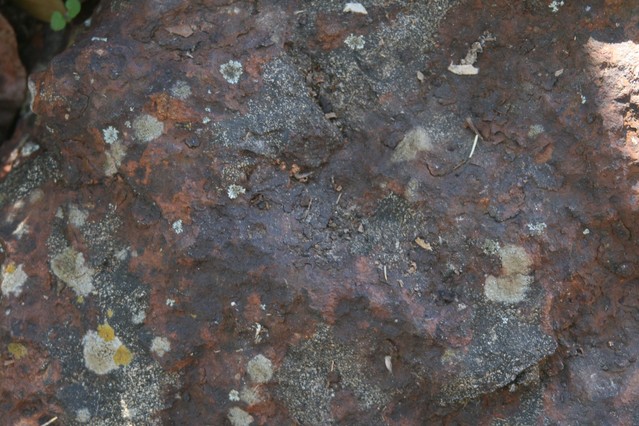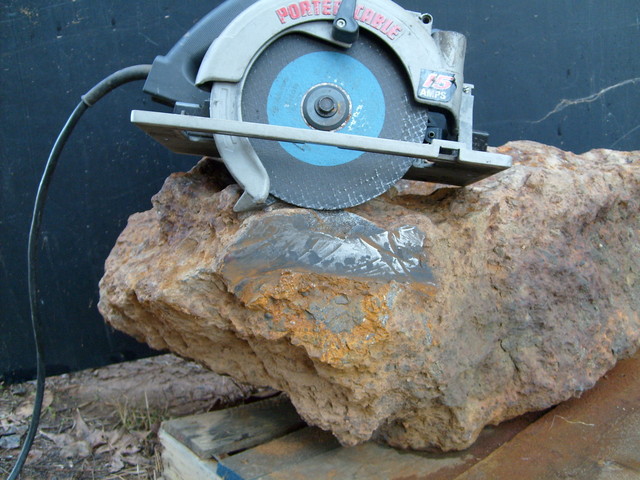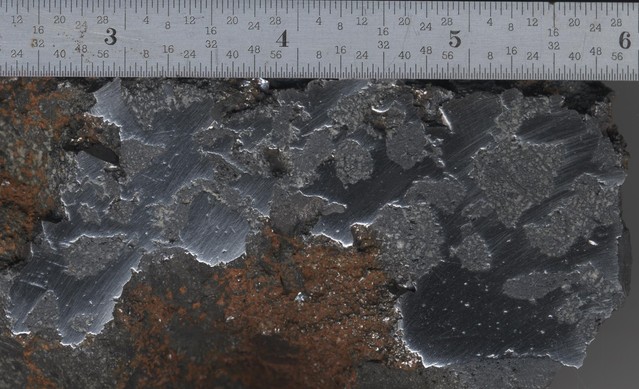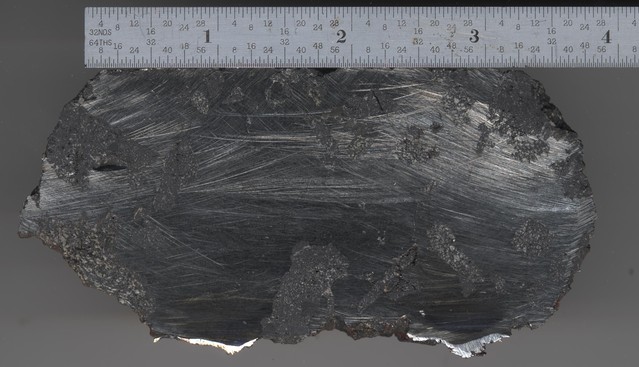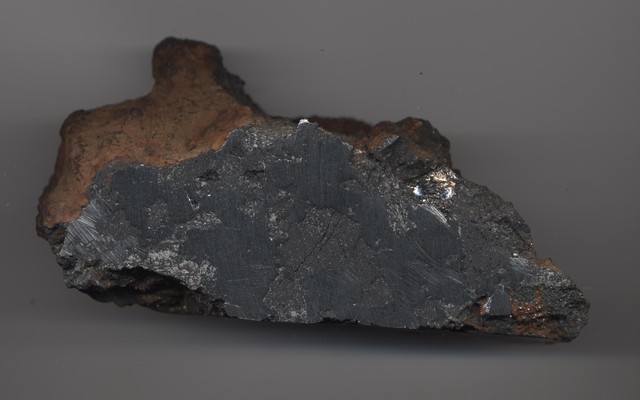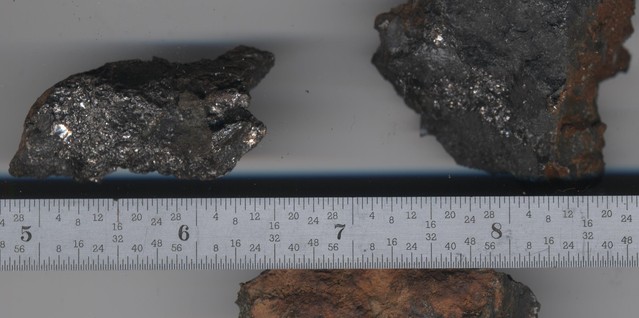Rusty Rock
Big rusty false hope
inducing rock
cause it looks kinda sorta like a meteorite.
Back in 1973 I was over at a friends house in my old neighborhood (had moved the year before) and while re-exploring an area I had played in countless times as a child noticed something new. A big rusty rock laying out in plain sight where none had been before. Dark red / black rusty rock weighing over 400 pounds.
After I found my rusty rock it spent twenty years in my parents back yard. After they passed, I moved it to our little (hobby) farm. At some point old 'rusty' was borrowed for a flower bed. Ten plus years undisturbed left the exposed surface as you see here. Hardly looks like the ugly thing in the next three pictures.
Flash forward to 2011 where I finally get around to grinding a small window to view the interior. After 38 years!
Quite encouraging to see something shiny! Inspired me to start on a larger window. Since I also needed a small chunk to test specific gravity I decided to do both at once.
Slow, dusty and stunk with a slight sulfur odor. A metal cutting abrasive blade in a circular saw will cut both metal and this rather soft rock. Unfortunately it did not cut deep enough, leaving me no choice but to break the chunk the rest of the way off with a sledge hammer. Feel free to cringe!
Cut and ground but not polished with Scotch Brite like the smaller window above. This window is approximately 7" long and not completely flat since I got tired of grinding. Note the wildly different sizes of the breccia, the largest is 2" across.
The removed chunk was sanded and buffed. Rather than trying to take a close up picture with our crappy digital camera (or buying film for the wifes SLR) I scanned it on a flat bed scanner.
Greater detail than any picture I can take for free. Much better close ups including two stunning microscope photographs here, Brandon Slice.
Another cut parallel to the original but offset approximately 1". Note the much higher percentage of metal verses stone compared to the other slice. Be a nice specimen to etch if it were only real. Update, 2012: This slice was scheduled be included in the auction to benefit Gary and CJ Foote in Tucson Arizona on February 4th. Sadly I mailed it too soon the first time and the hotel staff returned it. Tried sending it again and it arrived the day of the auction and was lost in the confusion.
90 degrees to the two previous views and taken before they were split into two slices.
Had a request for images of fresh fracture with no rust present. Hope you can tell by the shinny verses dull which areas are metal and which are rock. The larger right hand specimen has some clues where it turns the corner so to speak. The slightly older fracture has a bit of rust indicating the metal areas. The very bottom fragment that is holding the ruler down shows a close up of some old weathered surface.
At this point I have had a sample tested by a reputable Meteoritical lab and sadly it is not a meteorite. Update, December 13th 2011: Received the final report and not only is it not a meteorite, it is man made. :-( Report was also far less detailed than I was expecting. "determined to be igneous, a by-product from a foundry ore process." By-product implies something common, however 400+ pound pseudometeorites are not exactly common. Especially ones as interesting as this one has proven to be so far.
Idle speculation as to just how this
'thing' came to exist.
An orphaned process that was used briefly and abandoned prior to 1973? Possibly long prior since I suspect I'm not the first to possess and hang on to this false hope for many years.
A deliberate fabrication that never made it to market? Perhaps interrupted by the great depression? Have read that meteorite prices were relatively high back in the 1890's through the 1920's. Falling during the depression, and only rising again with modern collectors.
Most likely remaining possibility I can think of is an industrial accident. Big ladle of molten iron burst and spilled on a pile of gravel. But why would a foundry have a pile of rather soft igneous gravel lying around? Also, will a molten iron / gravel technique even work? Seems to me the gravel would all float to the top. Speculation is that Shirokovsky was made by a powderd metal / sintering process to avoid this problem.
Or...?
Stay tuned, and thanks for visiting!
William Bagwell
